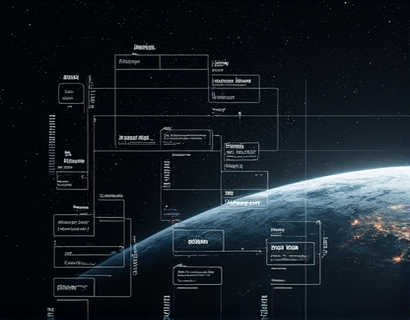Maximizing Leadership Efficiency: A Comprehensive Dashboard for Streamlined Team Management and Enhanced Productivity Across Diverse Industries
In today's fast-paced business environment, effective leadership is crucial for driving success and maintaining a competitive edge. For business leaders and organizational managers, managing large and diverse teams can be a daunting task. The complexity of overseeing multiple departments, ensuring seamless communication, and making informed decisions can often lead to inefficiencies and bottlenecks. To address these challenges, a comprehensive dashboard has been developed, designed to streamline team management and enhance productivity across various industries. This advanced tool is not just a management solution but a strategic asset that empowers leaders to optimize their processes and achieve outstanding results.
The need for an efficient leadership dashboard stems from the growing complexity of modern organizations. With teams spread across different locations, time zones, and functional areas, traditional management methods often fall short. A comprehensive dashboard offers a centralized platform that integrates various aspects of team management, from project tracking and performance analytics to communication tools and resource allocation. By consolidating these functions into a single interface, leaders can gain real-time insights, make data-driven decisions, and foster a collaborative work environment.
Key Features of the Comprehensive Dashboard
The dashboard is equipped with a suite of features tailored to meet the diverse needs of business leaders. One of the core functionalities is the project management module, which allows leaders to oversee multiple projects simultaneously. This module provides a clear overview of project statuses, milestones, and deadlines, ensuring that no task falls through the cracks. Team members can update their progress in real-time, and leaders can receive notifications for any deviations from the plan, enabling prompt corrective actions.
Another critical feature is the performance analytics dashboard. This tool aggregates key performance indicators (KPIs) from various team members and departments, offering a holistic view of organizational performance. Leaders can track individual and team productivity, identify areas of strength and weakness, and set targeted improvement goals. The analytics dashboard also supports custom KPIs, allowing organizations to align metrics with their specific objectives and industry standards.
Effective communication is the backbone of any successful team. The dashboard includes a communication hub that centralizes all team interactions, from instant messaging and file sharing to video conferencing and meeting scheduling. This integrated communication platform reduces the reliance on disparate tools and ensures that all team members are on the same page. Leaders can monitor communication flows, address issues promptly, and foster a culture of transparency and collaboration.
Enhancing Decision-Making with Data-Driven Insights
One of the most significant advantages of using a comprehensive dashboard is the enhancement of decision-making processes. By providing real-time data and actionable insights, leaders can make informed decisions quickly. The dashboard's data visualization tools transform complex data into intuitive graphs and charts, making it easier to understand trends and patterns. Whether it's analyzing sales data, assessing resource utilization, or evaluating team performance, leaders can access the information they need to drive strategic initiatives.
Moreover, the dashboard supports predictive analytics, which uses historical data to forecast future trends and outcomes. This feature is particularly valuable for proactive planning and risk management. Leaders can anticipate potential challenges and opportunities, adjust strategies accordingly, and stay ahead of the competition. The predictive analytics module also helps in optimizing resource allocation, ensuring that the right resources are deployed at the right time to maximize efficiency and effectiveness.
Streamlining Operations Across Diverse Industries
The versatility of the comprehensive dashboard makes it an ideal solution for organizations across various industries. Whether in healthcare, manufacturing, finance, or technology, the dashboard's adaptable features cater to the unique needs of each sector. For instance, in the healthcare industry, the dashboard can integrate patient management systems, streamline appointment scheduling, and monitor staff workloads to ensure optimal patient care and operational efficiency. In manufacturing, it can track production lines, manage inventory, and optimize supply chain operations, leading to reduced costs and increased output.
In the finance sector, the dashboard can consolidate financial data from multiple sources, provide real-time transaction monitoring, and support compliance reporting. For technology companies, it can manage agile development projects, track bug reports, and facilitate seamless collaboration among developers and stakeholders. The common thread across all industries is the dashboard's ability to simplify complex operations, enhance transparency, and drive productivity.
Empowering Leaders with Strategic Tools
Beyond operational efficiency, the comprehensive dashboard empowers leaders to focus on strategic initiatives. By automating routine tasks and providing deep insights into organizational performance, leaders can allocate more time to high-value activities such as innovation, talent development, and market expansion. The dashboard's strategic planning module allows leaders to set long-term goals, define actionable steps, and monitor progress against these goals. This module ensures that the organization remains aligned with its vision and mission, fostering a culture of continuous improvement and growth.
Additionally, the dashboard includes team engagement tools that help leaders build and maintain a motivated and cohesive team. Features such as recognition and reward systems, feedback mechanisms, and team-building activities contribute to a positive work environment. By fostering strong relationships and recognizing individual contributions, leaders can boost morale, reduce turnover, and enhance overall team performance.
Implementing the Dashboard: A Step-by-Step Guide
Implementing a comprehensive dashboard requires a structured approach to ensure a smooth transition and maximum benefit. The first step is assessment and planning. Organizations should conduct a thorough analysis of their current processes, identify pain points, and define the specific needs and objectives for the dashboard. This phase involves stakeholder engagement to gather input and ensure buy-in from all levels of the organization.
Next, selection and customization of the dashboard solution is crucial. Organizations should evaluate different dashboard platforms based on their features, scalability, and integration capabilities. Once the right solution is chosen, it should be customized to align with the organization's unique requirements. This may involve configuring modules, setting up workflows, and integrating with existing systems.
The training and onboarding phase is equally important. Leaders and team members need to be trained on how to use the dashboard effectively. Comprehensive training sessions, user manuals, and ongoing support ensure that users can leverage the full potential of the tool. Regular feedback sessions can help refine the training program and address any challenges that arise during the adoption process.
Finally, monitoring and continuous improvement are essential for sustaining the benefits of the dashboard. Organizations should establish key metrics to measure the dashboard's impact on productivity, communication, and decision-making. Regular reviews and updates based on performance data and user feedback ensure that the dashboard remains a valuable asset over time.
Conclusion
In conclusion, a comprehensive dashboard is an indispensable tool for modern leaders aiming to maximize efficiency and productivity. By streamlining operations, enhancing communication, and providing data-driven insights, the dashboard empowers leaders to manage diverse teams effectively and drive organizational success. Whether in healthcare, manufacturing, finance, or technology, the dashboard's adaptable features and strategic tools make it a valuable investment for any organization seeking to optimize its management processes and achieve sustained growth.










































